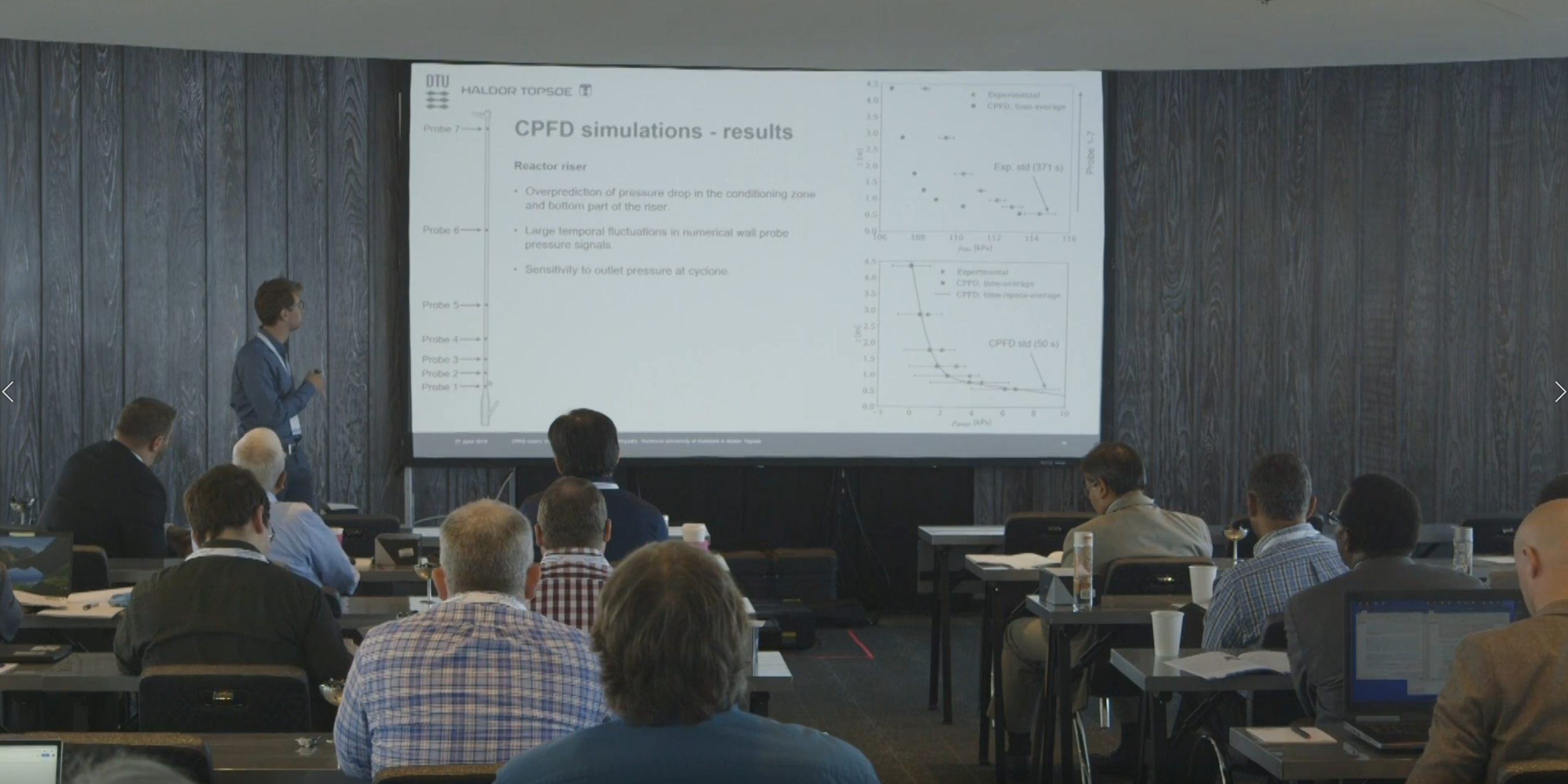About This Presentation
Presented by:
Frederik Zafiryadis – Technical University of Denmark
Summary. Catalytic cracking of sugars in a circulating fluidized bed (CFB) system is a novel technology for producing intermediary oxygenate products that can be further converted to a variety of bio- based chemicals. The technology has the potential to enable economically and environmental sustainable production of bio-based chemicals. The hydrodynamics of such a CFB system are very complex and play a critical role for successful operation of the plant. Hence, to support the design of the plant as well as the development and scaling-up of the technology, an in-depth understanding of the hydrodynamics in the system is needed. Three-dimensional computational particle fluid dynamics (CPFD) simulations are conducted based on the Eulerian-Lagrangian MP-PIC method to predict the hydrodynamic behavior of a cold flow-pilot scale CFB system at the Technical University of Denmark. The CFB system is of a dual fluidized bed (DFB) configuration, consisting of a reactor and a regenerator loop. Each loop is comprised of a riser, primary- and secondary cyclones, a bubbling bed, and a transfer line for connecting the two loops. A stripper section is located vertically below the regenerator bubbling bed to remove oxygen from the flow before re-entering the reactor riser. Detailed information on the hydrodynamic behavior of the system in terms of solids velocity, flux, residence time, as well as voidage and pressure distributions throughout the system are obtained and analyzed using a segregated modeling approach, decoupling the major parts of the system. The segregated method requires several subsystem simulations to be performed for achieving physical inflow conditions at the subsystem boundaries, improving modeling accuracy while reducing overall computational time and demands. Comparison of CPFD predictions with experimental data on the cold flow gas-solid pilot- scale model is conducted in terms of pressure distributions throughout the entire system, demonstrating the ability of the segregated full-loop model to capture the behavioral trends of the DFB system. Further work includes modeling optimizations of each subsystem with respect to e.g. tuning of model parameters, drag modeling, grid- and sub-grid discretization. Further extensions of the model are to include a third (liquid) phase to simulate atomization and evaporation of the aqueous sugar solution required for ensuing introduction of chemical reactions to predict performance parameters (e.g conversion and yields) of the system in both pilot- and commercial- scale.
About the speaker. Frederik Zafiryadis holds a master’s degree in mechanical engineering from the Technical University of Denmark (DTU), specializing in industrial fluid mechanics and computational fluid dynamics simulations of dilute particle-laden flow systems. He is experienced in experimental investigation of various types of flow phenomena; e.g. boundary layers, vortex-induced vibrations, and swirling flows, as well as numerical modeling of both internal and external, single- and multiphase flows using commercial and open-source CFD software. Since March 2019 he has been enrolled as a PhD student at the Chemical Engineering Department at DTU in collaboration with Haldor Topsøe, investigating and modeling the hydrodynamics of circulating fluidized beds, while undertaking short-termed consultancy projects as fluid mechanics specialist at the Danish engineering consultancy, Aerotak.

